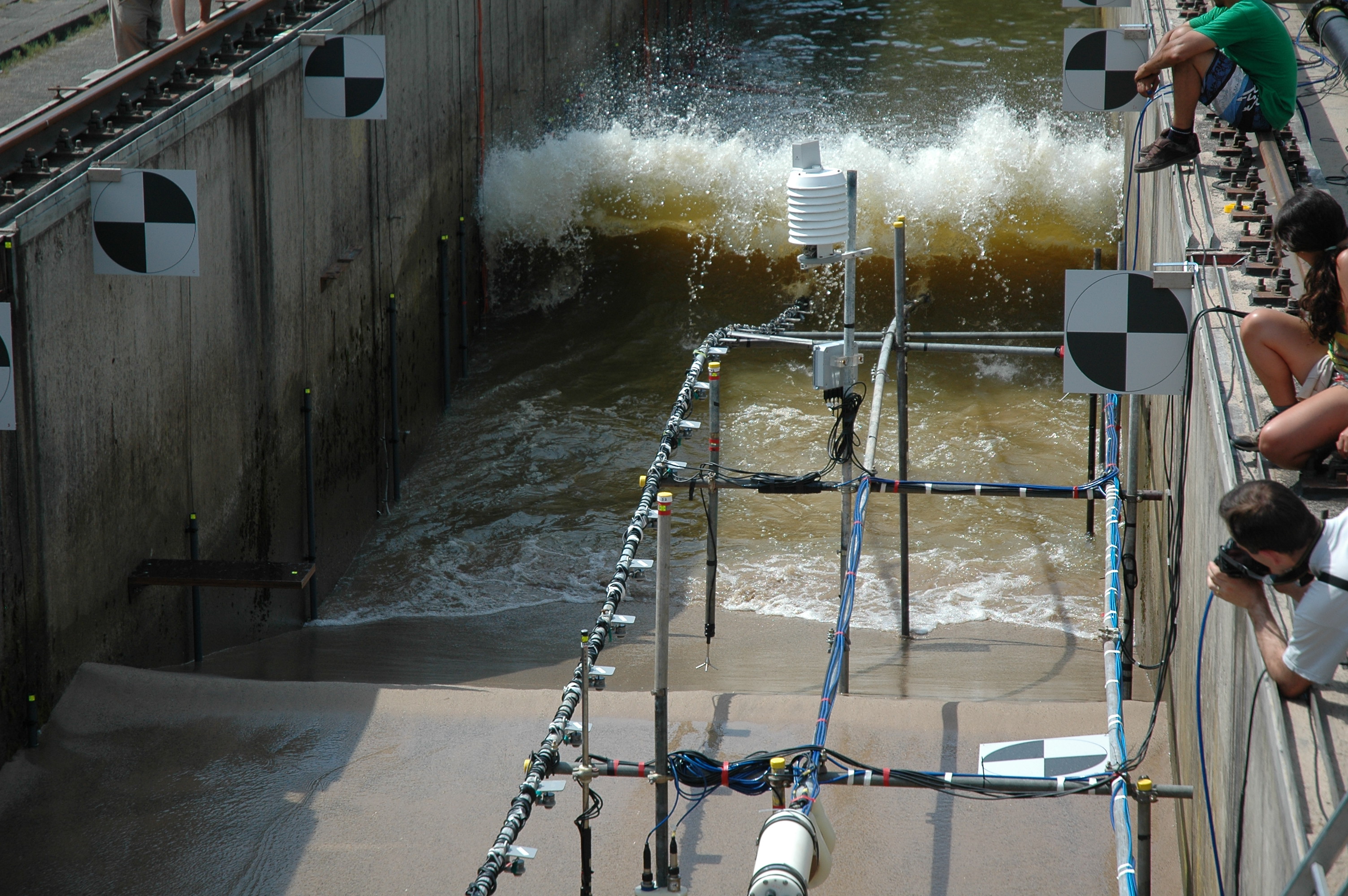Hachem Kassem, and co-authors Charlie Thompson, Carl Amos, and Ian Townend from the Geology and Geophysics research group have been studying the complex interactions between wave-induced turbulence and sediment resuspension. The results of their study, which used data collected during the Barrier Dynamics Experiment II (BARDEX II); a large EU funded project, part of the Hydralab IV framework have been recently published in Continental Shelf Research.
The study aimed to provide insight into the spatial (time) and scale (frequency) relationships between wave-generated boundary layer turbulence and event-driven sediment transport beneath irregular shoaling and breaking waves in the nearshore of a prototype sandy barrier beach. To this end, they employed a variety of techniques to assess the anisotropy and intermittency of Reynolds’ stresses (exchanges of momentum); and the contribution to stress generation and sediment mobilisation, of different types of coherent vortex structures within the wave boundary layer, including statistical, quadrant and spectral analyses. The entertainment of sediment by small and large scale vortices was assessed using wavelet analysis. The authors postulate a mechanism in which slowly evolving large scale coherent turbulence clusters induce cumulative suspension events within the boundary layer, which are maintained in small suspensions outside the boundary layer by small scale motions as long as momentum is supplied.
The paper is available at: http://www.sciencedirect.com/science/article/pii/S0278434315300625
or, in pre-print form, via research gate at: https://www.researchgate.net/publication/282097770_Wave-induced_coherent_turbulence_structures_and_sediment_resuspension_in_the_nearshore_of_a_prototype-scale_sandy_barrier_beach
